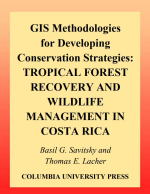Добрый день, Коллеги. Важное сообщение, просьба принять участие. Музей Ферсмана ищет помощь для реставрационных работ в помещении. Подробности по ссылке
GIS methodologies for developing conservation strategies. Tropical forest recovery and wildlife management in Costa Rica / Методологии ГИС для разработки природоохранных стратегий
About 2,200 years ago a scholarly librarian in charge of the prestigious collections of the museum at Alexandria conducted an elegant exercise in logic and experimentation. Using seemingly unrelated bits of information such as the observation of the penetration of sunlight into a well in the city of Syene, the speed of a camel caravan, and the shadow cast by an obelisk in Alexandria, Eratosthenes calculated a remarkably accurate estimate of the circumference of the earth (Wilford 1981). This was a profound observation; the limits of a planet as yet unexplored had been defined. As the human population of Earth continues to grow, these limits become increasingly more constraining. How we use and conserve space becomes more important every day.
The making of maps was one of the earliest of human activities. The Chinese were making accurate maps with legends in the second century b.c., and clay maps with cardinal directions present (that is, east—toward the rising sun— appeared at the top of the maps) have been recovered in Iraq which date to 2300 b.c. These maps might have been used to map and tax real estate. The Egyptians produced maps of gold mines, complete with roads. The spatial representation of development is an ancient craft, and contemporary research on conservation
and development is heavily reliant upon spatial analyses. <...>




